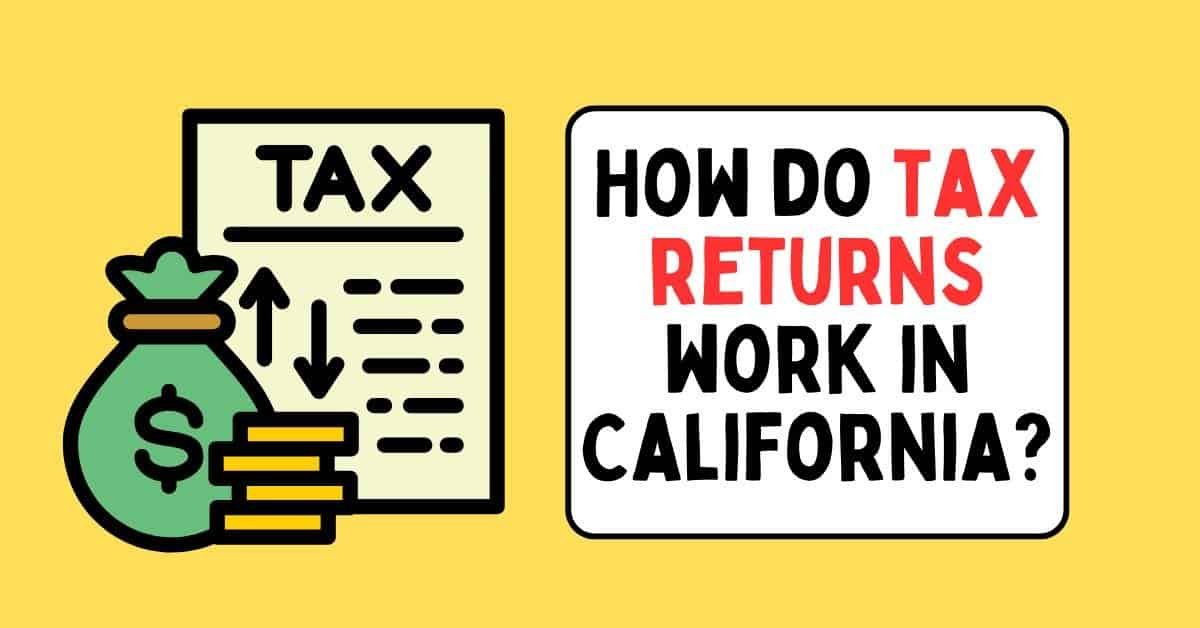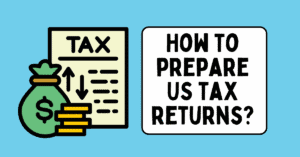Last updated: October 2025
Filing taxes can feel intimidating, especially when your livelihood or a major purchase depends on getting it right. If you’ve wondered, “How do tax returns work in California?”, this guide gives you a clear, compliance‑first overview you can trust. We explain the California process, compare it with federal, UK and Canadian rules, and show how to present documents without risking legal trouble.
Whether you’re a renter in California trying to demonstrate reliable income, a self‑employed consultant in the United Kingdom, or a small‑business owner in Canada, understanding the rules and deadlines is essential. We focus on timing, accuracy and the difference between lawful formatting and illegal alterations so you can present your records confidently.
At FinancialDocsProvider.com, we specialise in proofreading, formatting and organising financial documents without changing the underlying facts. Our compliance‑first approach helps tenants, loan applicants and entrepreneurs secure approvals while staying within the law. If you need professional help, explore our financial document services to see how we can support you.
Related Entities & Terms
- Forms: Form 1040, W‑2, 1099‑NEC/1099‑MISC (US); SA100, P60, SA302 (UK); T1 General, T4, Notice of Assessment (NOA) (Canada)
- Proofs: pay stubs, payslips, bank statements, profit‑and‑loss statements
- Regulators: Consumer Financial Protection Bureau (CFPB), Federal Trade Commission (FTC) and Internal Revenue Service (IRS); Financial Conduct Authority (FCA) & HM Revenue & Customs (HMRC); Financial Consumer Agency of Canada (FCAC) & Canada Revenue Agency (CRA)
- Key dates: 15 April (US federal), 15 April/15 October (California), 31 January/31 October/5 October (UK), 30 April/16 June (Canada)
- Programs: Volunteer Income Tax Assistance (VITA), Tax Counseling for the Elderly (TCE), Free File & Direct File
- Concepts: standard deduction vs. itemising, filing status, self‑employment income, redaction & formatting
- Legal frameworks: Fair Credit Reporting Act (FCRA), General Data Protection Regulation (GDPR), Personal Information Protection and Electronic Documents Act (PIPEDA)
- Documents: pay stub editing, bank statement formatting, tax return packaging
What are the legal basics of filing tax returns in California and abroad?
Deadlines and truthfulness drive tax compliance. In California and at the federal level, most individuals must file by 15 April, with filing time extended to 15 October if you request an extension. An extension gives you more time to file, not more time to pay.
In California, individual income tax returns are due on 15 April 2025, with an automatic six‑month extension to file until 15 October 2025—though any tax owed must still be paid by 15 April. The Internal Revenue Service (IRS) follows a similar schedule: requesting an extension by the 15 April deadline gives you until 15 October to file, but it does not extend the time to pay taxes due. In the UK, you must tell HMRC by 5 October if you need to complete a tax return and submit paper returns by 31 October or online returns by 31 January of the following year. In Canada, most individuals must file and pay by 30 April 2025, while self‑employed individuals (and their spouses) can file by 16 June 2025, though any balance owing is still due 30 April.
Filing on time protects you from late‑filing penalties. The California Franchise Tax Board (FTB) imposes a 5% penalty of the tax due for each month a return is late, up to 25%. If the late filing is considered fraudulent, the penalties jump to 15% per month and up to 75%. The IRS also charges an accuracy‑related penalty equal to 20% of the underpayment attributable to negligence or disregard of rules, and interest accrues on unpaid taxes and penalties. In all jurisdictions, tax fraud—intentionally underreporting or failing to report income—is illegal.
Accurate tax returns do more than satisfy the law; they underpin loan approvals, visa applications and public benefits. Lenders and agencies cross‑check returns against pay stubs and bank statements. Discrepancies or obviously altered documents can cause denials, audits or even criminal charges. When in doubt, consult official guidance from the FTB, IRS, HMRC or CRA, and consider a professional formatting service to present your documents clearly without changing the numbers.
Mini‑scenario: You worked a salaried job and freelanced on weekends. You received a W‑2 and several 1099‑NECs. You file on time but forget to pay your estimated federal and California taxes on the freelance income by April. Even if you request a filing extension, you may still face penalties and interest on the unpaid amounts because extensions don’t extend time to pay.

Which edits to tax return documents are allowed?
Cosmetic edits that improve readability and protect privacy are permissible across the US, UK and Canada. The rule of thumb is simple: you can enhance presentation, but you cannot change facts. Numbers, dates and signatures must remain exactly as they appear on your originals.
You can improve the readability and privacy of your tax records without breaking the law. Regulators in the US, UK and Canada permit taxpayers to make purely cosmetic changes—think of it as tidying up a file cabinet. This includes redacting sensitive data, combining multiple forms into a single PDF, adjusting contrast for legibility and adding bookmarks or a table of contents. None of these actions alters the underlying financial amounts, dates or signatures.
When we format your documents, we focus on organisation and clarity. For example, we might crop blank margins, rotate upside‑down pages or reorder sections so that W‑2 forms precede your Schedule C. We can translate handwritten notes into typed annotations and embed digital bookmarks for easy navigation. We also redact Social Security numbers, National Insurance numbers or Social Insurance Numbers (SINs), masking all but the last four digits to protect your identity. These edits are compliant in every jurisdiction because they preserve the factual content.
Our guide to preparing bank statements for apartment applications offers more examples of permitted redaction and formatting. We apply the same principles to tax returns: improve readability and organisation, never change the numbers.
Example: Your UK lender asks for SA302s and tax year overviews. We can merge the PDFs, redact your National Insurance number except for the last four digits and add bookmarks for each year—without changing any figures or dates.
Which edits are illegal?
Any change that misrepresents who you are or how much you earn crosses the line into fraud. If an edit would alter income, deductions, dates, signatures or your identity, it is illegal. Enforcement agencies treat these changes seriously and penalties can be severe.
Illegal alterations go beyond tidy formatting and cross into fraud. In the eyes of tax authorities, any change that misrepresents your income, deductions, filing status or identity is fraudulent. Altering wages on a W‑2, changing the date on a Form 1040 or erasing a tax liability number can trigger penalties or criminal charges. California’s FTB distinguishes negligence from fraud; fraudulent late filings face penalties of up to 75% of the unpaid tax. The IRS assesses a 20% accuracy‑related penalty on underpayments due to negligence, and interest accrues until the balance is paid.
Common illegal edits include manipulating reported income to qualify for a mortgage, masking high deposits to appear eligible for a rental or substituting one person’s tax document for another. Some clients are tempted to “borrow” a relative’s tax return when they lack sufficient history; doing so is identity fraud. Others may try to generate fake 1099s, T4s or NOAs to inflate self‑employment income. These practices are serious offenses. In California, tax fraud is defined as intentionally underreporting or failing to report income and can lead to prosecution. Under the UK’s Fraud Act and Canada’s Income Tax Act, falsifying records can result in fines, repayment of benefits and jail time.
Remember: we never fabricate numbers or change factual data. Our service exists to enhance clarity, not to create misleading documents. If you need help understanding what changes are permitted, read our article on legally editing bank statements, which covers similar principles and outlines the consequences of fraud.
Mini‑scenario: A borrower edits a 1099‑NEC to add an extra zero to last year’s income and submits it with a loan application. The lender compares deposits against bank statements and flags the mismatch. The file is rejected and the borrower risks prosecution. The edit wasn’t formatting; it was fraud.
When do you need professional document formatting?
If your situation is simple, you may not need help. But when stakes are high—loans, immigration, court filings or complex multi‑year returns—clarity and consistency can speed approvals. Professional formatting reduces questions and prevents costly back‑and‑forth.
Not everyone needs to hire a professional to organise tax returns. If your finances are straightforward, you can often attach PDFs yourself. Yet there are situations where expert formatting is essential: when you’re applying for a high‑stakes loan, submitting documents to an immigration officer or presenting evidence in court. In these cases, clarity, consistency and confidentiality matter. A well‑structured tax return packet can reduce underwriting time and prevent unnecessary back‑and‑forth with lenders or agencies.
Consider these scenarios:
- Renters: Many California landlords ask to see recent federal and state tax returns alongside pay stubs and bank statements. A cleanly compiled packet—where schedules are bookmarked, sensitive data is redacted and income flows are easy to follow—helps you stand out. See our article on preparing bank statements for rentals for more tips.
- Auto or SBA loans: Lenders look at taxable income to evaluate repayment ability. Self‑employed applicants must often provide several years of returns plus profit‑and‑loss statements. Packaging these documents professionally can prevent delays and misinterpretation.
- Immigration and visa applications: Many visa categories require proof of consistent income or tax compliance. UK immigration authorities might request SA302s or tax year overviews; the CRA may request NOAs. We help present these forms clearly and meet country‑specific formatting rules.
- Self‑employed professionals: If you run a freelance business across borders, you might file in multiple jurisdictions. A professional service can unify your W‑2, Form 1099, T4 and SA302 documents into a coherent package, flagging any discrepancies and ensuring each authority’s guidelines are met.
In all of these cases, our team ensures your documents meet underwriter expectations. We do not alter your data; we simply organise, redact and format them to enhance legibility and compliance. Learn more about our proof of income editing services and see why renters, entrepreneurs and loan applicants across the US, UK and Canada trust us.
Mini‑scenario: A couple is applying for a mortgage. One spouse has W‑2 income; the other has two years of 1099 income and a Schedule C. We compile both federal and California returns, include a concise contents page, redact identifiers and add bookmarks for each year. The underwriter can verify totals quickly, avoiding delays.
How does our tax return document formatting service work?
Our workflow is built for speed, transparency and security. We confirm completeness, reconcile figures and enhance readability—without changing any numbers. You receive a clean, navigable PDF plus your original files for records.
Our process is designed to be efficient, transparent and secure. We recognise that you may be juggling tight deadlines, so we streamline every step from initial intake to final delivery. Here’s what happens when you engage us to organise your tax return documentation.
- Intake & Consultation: You’ll start by completing a short intake form where you describe your goals (e.g., rental, loan, immigration) and upload scanned or digital copies of your tax forms. If you’re not sure what to include, our team will guide you.
- Document Review & Reconciliation: Our editors verify that your documents are complete and consistent. We cross‑check totals across your W‑2s, 1099s or T4s, match them with bank deposits and flag discrepancies for your review. This step ensures that formatting doesn’t mask underlying issues.
- Formatting & Redaction: Once the data has been reconciled, we apply page rotations, crop marks, bookmarks and clear headings. We redact personal identifiers and consolidate multiple years into a single, navigable PDF. If you have forms from different jurisdictions (e.g., a California FTB Form 540 and an IRS Form 1040), we organise them by jurisdiction.
- Quality Assurance: A senior specialist reviews the final package to confirm that no numbers have been altered and that redactions meet privacy standards. We check for legibility on various devices to ensure lenders and agencies can read your documents without technical issues.
- Secure Delivery: We deliver your formatted documents digitally via encrypted link or secure email. You receive both the formatted PDF and a zipped folder of your original files for record keeping.
Turnaround times are typically 24–48 hours, depending on the number of years and jurisdictions involved. We communicate throughout the process so you always know what stage your project is at. For a detailed breakdown of pricing, visit our pricing page.
Data protection notes: We apply least‑privilege access, store files in encrypted folders during the engagement and remove temporary copies after delivery. We encourage clients to share via password‑protected links.
What should your compliance checklist include?
A concise checklist prevents oversights and keeps your packet compliant. Use the items below to gather documents, confirm accuracy and protect personal data before sending anything to a lender or agency.
- Gather required forms: Collect your federal and state returns (Form 1040, Form 540), W‑2s, 1099s, 1098 mortgage interest statements, Schedule C, T1 General, T4 and any NOA or SA302 forms.
- Confirm deadlines: Mark the filing dates on your calendar—15 April for California state and federal returns, 31 October and 31 January for UK returns, and 30 April or 16 June for Canadian returns.
- Verify numbers: Cross‑check totals across your pay stubs, bank deposits and tax forms. Underwriters and tax agencies will perform the same comparison. Inconsistencies can delay approvals or trigger audits.
- Redact personal identifiers: Mask Social Security, National Insurance or Social Insurance numbers; remove account numbers and any healthcare or insurance IDs.
- Include supporting documentation: If you’re self‑employed, attach profit‑and‑loss statements and receipts for deductions. For rental applications, include proof of employment or a letter from your employer.
- Scan at high quality: Use 300 dpi resolution or better so that text is legible on multiple devices. Avoid shadows and skewed pages.
- Organise logically: Present documents chronologically or group them by type (e.g., returns, income statements, receipts). Add a contents page for longer packets.
- Retain originals: Keep original scans in a secure folder. You may need to provide them for verification if asked.
Following this checklist reduces the risk of missing data and demonstrates professionalism to underwriters. For additional tips on packaging your documents, read our article on preparing US tax returns.
Pro tip: Name files consistently—for example, 2024-IRS-Form-1040.pdf and 2024-CA-Form-540.pdf. Consistent naming makes review faster for both you and the underwriter.
What red flags cause rejections?
Small presentation errors can trigger big questions. Aim for complete packets with consistent numbers and clear explanations for anything unusual. Address potential concerns before a lender or agency has to ask.
- Inconsistent figures: Total wages on your W‑2s or T4s should match the income reported on your tax returns and bank statements. Discrepancies are a major audit trigger.
- Missing pages or annexes: Submitting only the first page of a return looks incomplete. Always include all schedules and attachments, even if you think they’re irrelevant.
- Obvious alterations: Changes in font size or style, inconsistent spacing or blurred figures suggest tampering. Lenders may reject documents that look doctored.
- Unexplained deposits or deductions: Large bank deposits without matching income or unusual deductions can raise questions. Include explanations or receipts.
- Mismatched personal information: Names and addresses should be consistent across returns, W‑2s, pay stubs and bank accounts. Multiple addresses could indicate fraud.
- Late filings without explanation: Filing after the deadline without noting an extension can lead underwriters to wonder if penalties or interest apply.
Proactively addressing these issues—either by clarifying them in a cover letter or including supporting documents— reduces the chance of rejection. If there’s legitimate context for an irregularity, state it plainly and provide proof.
Where can you find official resources and further reading?
Always confirm requirements with official sources. The links below explain deadlines, extensions and penalties so you can double‑check rules for your situation. Bookmark them and refer back when planning next year’s filings.
- California FTB – Extension to file: explains the automatic six‑month extension to file until 15 October and reminds you that payment is still due by 15 April.
- California FTB – e‑file calendars: lists individual and fiduciary due dates and emphasises that the due date to file returns and pay any balance is 15 April.
- IRS – How to request an extension: explains that requesting an extension by 15 April gives extra time to file but not to pay.
- HMRC – Self Assessment deadlines: details the 5 October notification requirement and the 31 October (paper) and 31 January (online) deadlines.
- CRA – What you need to know for the 2025 tax‑filing season: summarises that most Canadians must file and pay by 30 April 2025, while self‑employed individuals have until 16 June.
- How to prepare US tax returns: an in‑depth internal guide covering deadlines, forms and best practices.
- Is it legal to edit a bank statement?: explores the boundary between lawful formatting and fraudulent alterations.
- How to edit bank statements for apartment applications: offers practical advice on redacting and organising bank statements for rental applications.
- Contact our team: reach out for personalised help or clarifications.
Frequently asked questions
These quick answers address the most common filing and formatting questions we hear from California residents and international clients. Each answer focuses on compliance and clarity so you can act with confidence.
Do I need to file a California state tax return if I already filed a federal return?
Yes. California has its own tax system and separate return (Form 540 for most residents). Even if you filed a federal Form 1040, you must still file a state return by 15 April. The FTB grants an automatic extension to 15 October, but payment remains due on 15 April.
What happens if I can’t pay my California taxes by the April deadline?
You should still file on time and pay as much as you can. Filing by 15 April avoids the 5% per month failure‑to‑file penalty. The FTB will assess a separate penalty (up to 25% of unpaid tax) for failing to pay. You can request a payment plan through the FTB’s online portal. The IRS offers similar payment plans for federal taxes.
How long should I keep my tax records?
The IRS recommends retaining tax returns and supporting documents for at least three years, which is the typical statute of limitations for audits. However, if you have self‑employment income or claim specific deductions, keep your records for six years. In Canada and the UK, tax authorities also suggest keeping records for six years. Always store originals in a secure location in case you need to substantiate your filings.
Can I edit the formatting of my tax returns for clarity?
Yes. You may redact personal identifiers, rotate pages, adjust contrast and merge documents as long as you do not alter factual amounts, dates or signatures. Cosmetic formatting is legal and can make your packet easier to review. See our compliance snapshot above and our article on legal bank statement edits for more guidance.
How do I request an extension for UK or Canadian tax returns?
In the UK, HMRC does not offer general extensions; you must submit paper returns by 31 October or online returns by 31 January. If you register for Self Assessment after 5 October, HMRC will set a new deadline three months from your registration. In Canada, there’s no formal extension for personal returns—the deadline is 30 April, though self‑employed individuals have until 16 June to file. If you cannot pay, file on time and contact the CRA to arrange a payment schedule.
Need accurate, reliable financial documents fast? Contact FinancialDocsProvider.com now.




Add comment